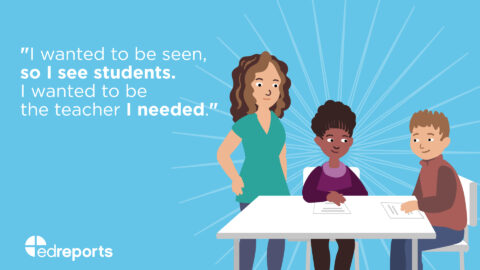What I Learned From Teaching English-Language Learners for 30 Years
From the English-only movement to an asset-based approach to language.
Latest Resources
article
Mathematicians at Work, Expect Noise: A Conversation with Georgina Rivera
EdReports Director of Mathematics, Tim Truitt, spoke with Georgina Rivera, incoming 2nd Vice President of the National Council of Supervisors of Mathematics (NCSM), about her journey as an educator and how to achieve equity in mathematics classrooms. Read part one of their conversation.
video
Watch: “I wanted to be the teacher I needed.”
Educator Georgina Rivera shares how her experiences growing up as a multilingual learner shaped the teacher she ultimately became.
article
5 Ways Quality Curricula Can Support English Language Learners
Teacher and coach Erin Moreno shares best practices on how to leverage aligned instructional materials to support students learning English.


